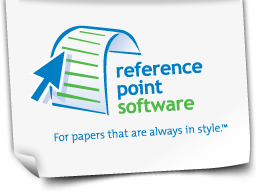How to Write a Literature Review for College
While youΓÇÖre at college, you may be required to write a literature review. The common misconception is that this means reading and then writing an opinion about what you have read. However, in the context of your college studies, this isnΓÇÖt an accurate understanding.
What is a literature review?
It is an analysis of existing work used in relation to a narrow topic. A literature review is used to examine previous related research by extracting and comparing the major elements and showing their relationships through summary and classification. It identifies new ways to interpret the current writings about a topic and sheds light on gaps in research, bringing knowledge up to date and pointing the way to further research.
While a literature review is comprehensive, it isnΓÇÖt exhaustive. It isnΓÇÖt practical or necessary to analyze all the articles, books, reports and other written works about a topic. It only includes the most pertinent writings to your assignment.
How does a literature review differ from a research paper?
The prime focus of an academic research paper is to develop a new argument. A research paper will contain a literature review as one of its parts. Within the context of a research paper, a literature review is used to help the reader by establishing what is already known about a particular topic and what methods have been used to research that topic. It brings the reader up to date to the place you are starting from and exposes the gaps in the literature that you are using as a foundation and support for the new insight that you are contributing. Your review of the literature also helps save you from reproducing what is already known.
The focus of a literature review, however, is to summarize and synthesize the arguments and ideas of others without adding new contributions. It adds to your understanding of the subject while you develop skills in information seeking and critical appraisal.
What are the basic steps to review the literature?
Before finding the material to research, the first step is to decide what topic you will be examining and the issues in relation to it. The narrower your topic, the easier it will be to limit the number of sources you need to read in order to get a good survey of the material. Find the literature by using libraries, on-line databases and other appropriate sources.
The second step is to skim through the literature youΓÇÖve selected, evaluating the information. This is not an in depth study of each piece of literature at this stage. As you review each piece, ask yourself if it makes a significant contribution to the understanding of the topic and if itΓÇÖs directly relevant to your specific topic focus and why. Take notes and keep your focus clear. Discard all literature that is not in the scope of your criteria.
The third step requires that you read through in more detail the remaining literature that you will use in your review. This time, you will assess if the literature is current, relevant, objective, proven and unbiased, and if the authorΓÇÖs credentials are satisfactory. As with the previous cursory review, keep the literature that fulfills those conditions and discard the rest. Continue to make notes as you go to help you develop and refine your perspective.
Next, when you have finished reviewing the literature, you will be ready to make an initial outline of your literary review. Chart out the way you will organize the information you have accumulated. Formulate your thesis and then go on to write your paper. The structure is like other academic papers with an introduction, a main body and a conclusion. You must also cite your sources correctly, using either the MLA or APA format, as appropriate. If you are unsure as to which formatting guidelines you should use, ask your professor.
The final step is editing your literature review. In this phase, you will correct spelling and grammatical errors, as well as revise any word choices that interrupt the flow. Additionally, you will need to review all the formatting requirements. Luckily there is a way to save time editing your paper using formatting products that ensure your paper adheres to the correct MLA or APA format with just a few simple clicks, giving you to more time to focus on the rest of your paper.
David Plaut is the founder of Reference Point Software (RPS). RPS offers a complete suite of easy-to-use formatting template products featuring MLA and APA style templates, freeing up time to focus on substance while ensuring formatting accuracy. For more information, log onto http://www.referencepointsoftware.com/ or write to us here.
Reference Point Software is not associated with, endorsed by, or affiliated with the American Psychological Association (APA) or with the Modern Language Association (MLA).
Tags: college mla template, literature review, mla writing, reference point software, writing tips
